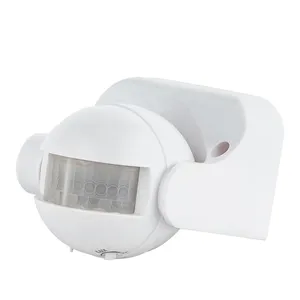An Introduction to Analog PIR Sensors
Passive Infrared (PIR) sensors are pivotal components in modern security and automation systems. An analog PIR sensor operates by detecting infrared light emitted from objects within its field of view. Typically, these sensors are used to sense movement of people, animals, or other objects. They are widely utilized in applications such as security alarms, automatic lighting control, and energy-efficient systems.
Understanding the Analog Output of PIR Sensors
The PIR sensor analog output is a variable signal that corresponds to the detected infrared radiation. Unlike digital outputs that offer a simple high or low state, an analog signal provides a range of values, offering a nuanced understanding of the detected motion. This makes analog PIR sensors particularly useful for applications requiring sensitivity adjustments or more complex analysis of the detected motion.
Types and Applications of Analog PIR Sensors
There are various types of PIR sensors, each suited to different applications. The question of whether a PIR sensor is analog or digital depends on its output signal. While analog PIR sensors are preferred for their variable output, digital PIR sensors provide a binary output and are often used in simpler systems. Analog sensors are commonly employed in systems where more data about the detected motion is required, such as in certain types of security cameras and intricate lighting systems.
Features and Advantages of Analog PIR Sensors
Analog PIR sensors offer several features that make them advantageous for a variety of uses. The PIR analog output allows for adjustable sensitivity, which can be calibrated to prevent false alarms caused by minor movements. This flexibility is essential in creating reliable and efficient motion detection systems. Additionally, the ability to discern between different levels of infrared radiation can be crucial in environments with fluctuating temperatures or when monitoring areas with varying levels of heat emission.
Materials and Design Considerations
The construction of a PIR sensor analog involves materials that are sensitive to IR radiation, typically pyroelectric materials. The design and material choice impact the sensor's responsiveness and durability. It is important to select a sensor with the appropriate specifications for the intended environment, as factors such as the sensor's range, field of view, and the material's resistance to environmental stressors can significantly affect performance.
Choosing the Right Analog PIR Sensor
Selecting the correct pir sensor analog or digital model is crucial for the success of any project. For those requiring detailed motion analysis, an analog model is often the best choice. When considering a pir sensor digital or analog, it is essential to understand the specific needs of the application to make an informed decision. The versatility of analog sensors often makes them the preferred choice for complex and sensitive applications.









































 浙公网安备 33010002000092号
浙公网安备 33010002000092号 浙B2-20120091-4
浙B2-20120091-4